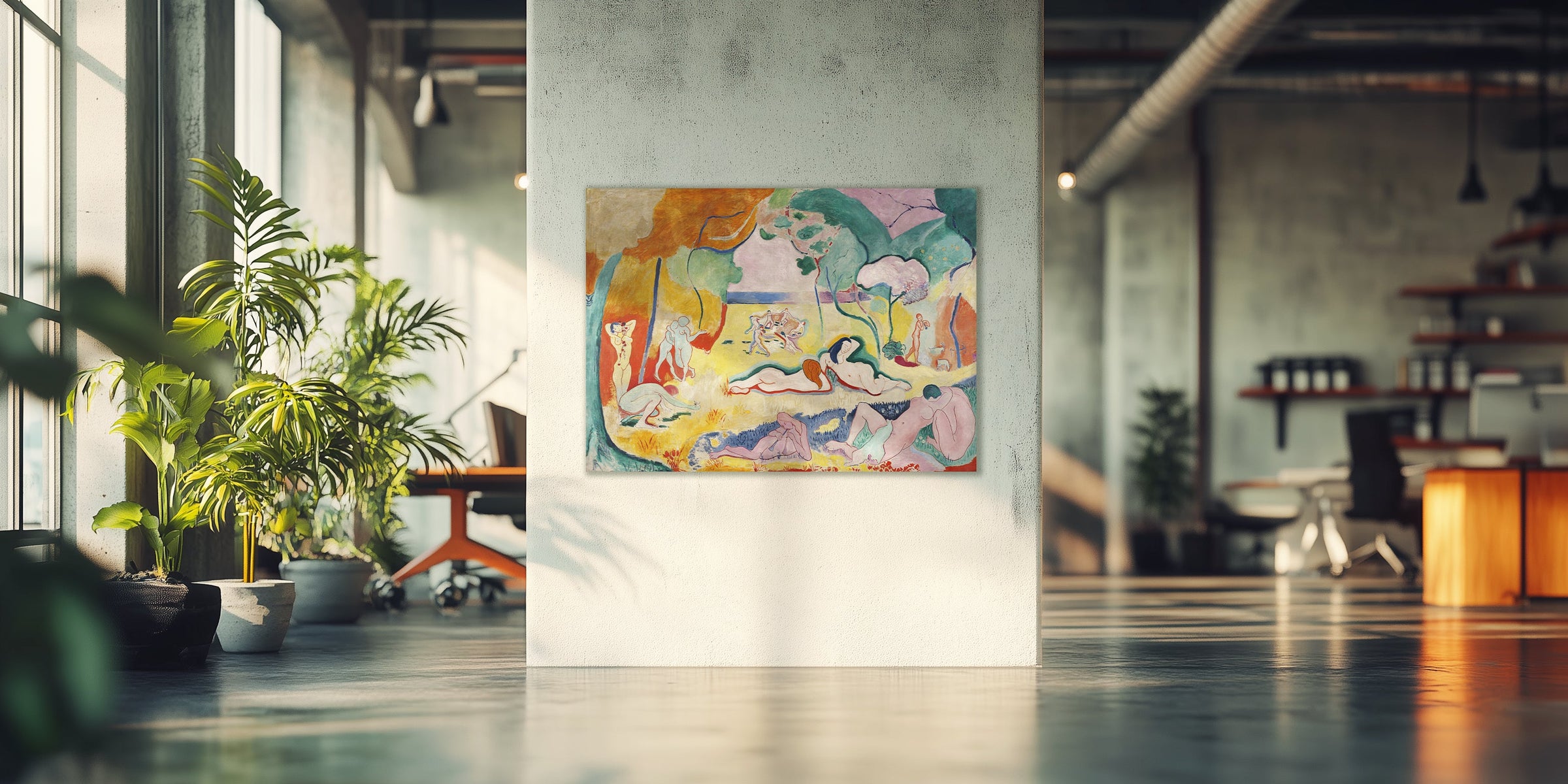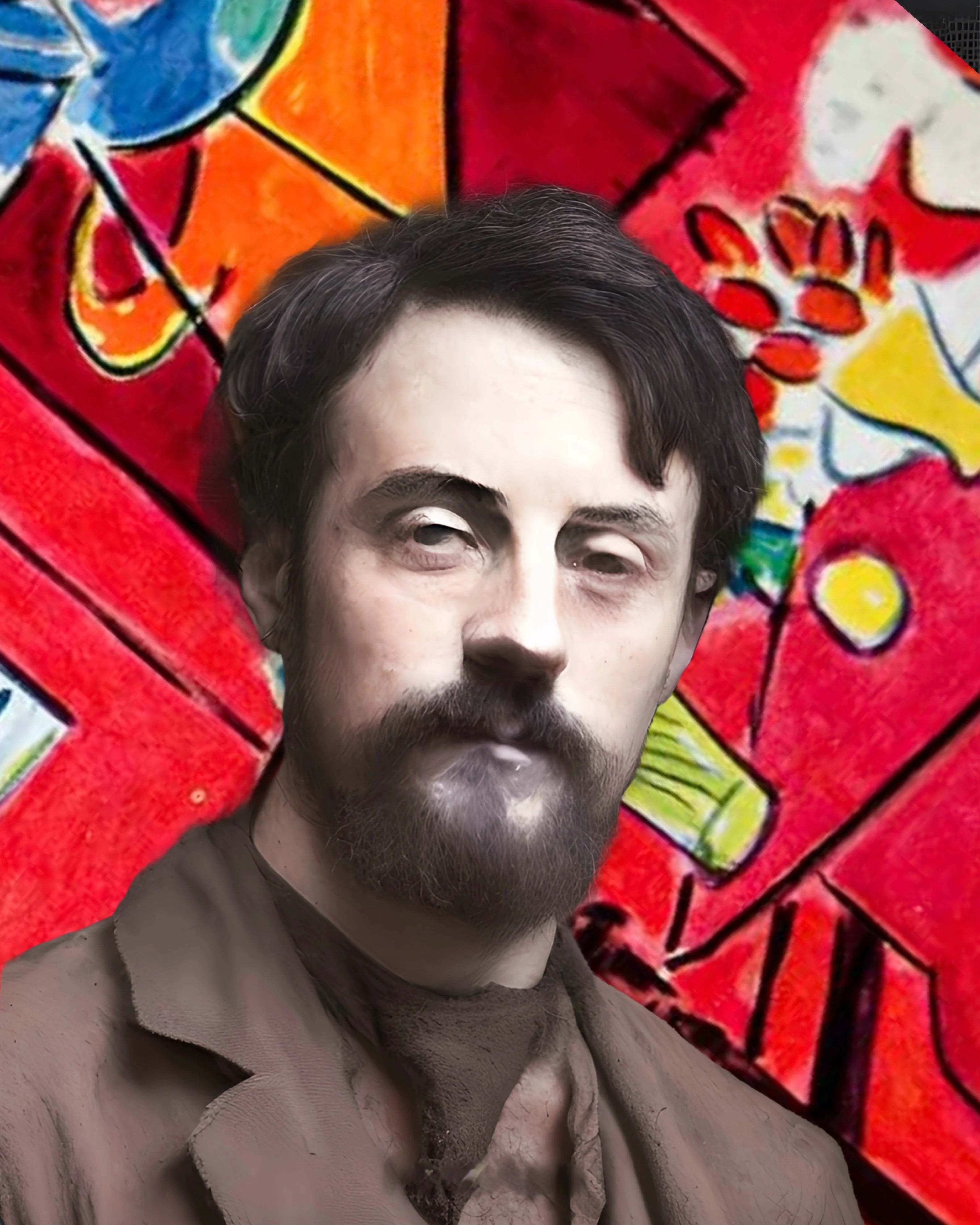
Henri Matisse

Henri Matisse, one of the most prominent painters of the 20th century, was born on December 31, 1869, in Le Cateau-Cambrésis, France. His unique style and bold use of color made him a central figure of Fauvism, a movement he co-founded with André Derain. Initially influenced by Impressionism, especially by the works of Claude Monet and Paul Cézanne, Matisse developed a style that prioritized emotion and expression through pure color and simplification of forms.
Matisse was renowned for his ability to transform everyday objects into vibrant and lively compositions. Works like "The Joy of Life" and "The Dance" exemplify his mastery of color and his ability to capture the essence of movement. Throughout his career, Matisse maintained a mutually influential relationship with contemporary artists like Pablo Picasso and Georges Braque. His interaction with Picasso, in particular, was a mix of rivalry and respect, which pushed both to explore new frontiers in modern art.
Fauvism, the artistic movement in which Matisse was a central figure, was characterized by the use of non-naturalistic colors and broad brushstrokes. This approach significantly influenced the development of Expressionism and Cubism. Artists like Marc Chagall and Hans Hofmann were deeply inspired by Matisse's work, adopting his vibrant use of color and focus on the simplification of forms.
Matisse not only influenced painting but also other artistic disciplines, such as design and sculpture. His series of cut-outs, created in the last decade of his life, demonstrated his constant innovation and ability to reinvent himself over the years. These cut-outs, made with colored paper, became icons of his late work, highlighting his focus on form and color.

